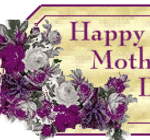There are a lot of articles on the Internet, and on Associated Content, about teaching a baby sign language. This may work once a baby is 4-5 months old, but what are new mothers to do until then? There is nothing more distressful (for the mother and for the baby) than hearing a newborn baby’s cry and not being able to understand why they are crying.
Well now an Australian mom claims to have cracked the “secret language” of babies, and her recent demonstration on “Oprah” was quite convincing!
Pricilla Dunstan was born with what she terms a “photographic memory for sound.” She was able to play back a Mozart concert on the piano at the age of four after hearing it once. As she got older, she learned to use this gift to be able to sense moods of those people she was around, and sometimes even diagnose illnesses.
When Pricilla became a mother, she used her special gift to hear and remember the different types of cries her baby son made, and eventually realized that other babies all made the same noises when they cry.
Pricilla tested her baby cry theory on over 1,000 infants all over the world – different races and cultures – and says that all 0-3 month old babies have the same five cries. A newborn baby’s cry is actually a reflex to a particular situation and therefore all babies have the same cries. If parents do not respond to those reflex cries, the baby eventually stops using them.
Pricilla says it is important that a parent listen to their baby’s cry when they are still in the “pre-cry” stage – before they have become hysterical because they are not being understood. While in the “pre-cry” stage, one cry can be more easily distinguished from the others, although Dunstan says she has had no problems teaching new mothers to distinguish between the different cries.
Here are the five “words” that Pricilla Dunstan says can be found in the cries of all newborn babies:
• Neh
“I’m hungry” The “N” sound comes from the suckling reflex. The baby is putting their tongue to the top of their mouth, like they do when they suckle.
• Owh
“I’m sleepy”. This reflex sound is tied to the yawn reflex.
• Heh
“I’m uncomfortable”. This is the cry a baby makes when they are too warm, too cold, need their diaper changed, or are otherwise “in distress.
• Eair
“I have lower gas.” This sound is a deeper cry than others – often sounding like a grunt – and is sometimes accompanied by a drawing up of the legs. This cry means the baby probably needs to have a bowel movement, or has intestinal gas.
• Eh
“I need to burp.” This is a reflex sound that a baby makes when it it trying to push air out of its stomach.
As part of the Oprah segment, a tape was shown of Dunstan sitting in a room with eight new mothers and their babies, including one set of twins. She explained her cry theory and, as a baby would start to cry, she worked with the mother to show her what her newborn was telling her. The results were amazing! The mothers and their babies were also in the audience on the day the program was recorded (several weeks after the initial taping had been made) and each one told stories of how much better they were doing with their babies now that they understood what their babies were telling them. One mother even said she had finally been able to take HER FIRST NAP since her baby had been born!!
If you would like to hear actual babies making these cries, or if you think a DVD of this amazing discovery would be the perfect gift for the new mothers on your gift list, check out the “Additional Resources” section at the end of this article.
Reference:
- Oprah.com segment on “The Secret Language of Babies”Order the Dunstan Baby DVD!




